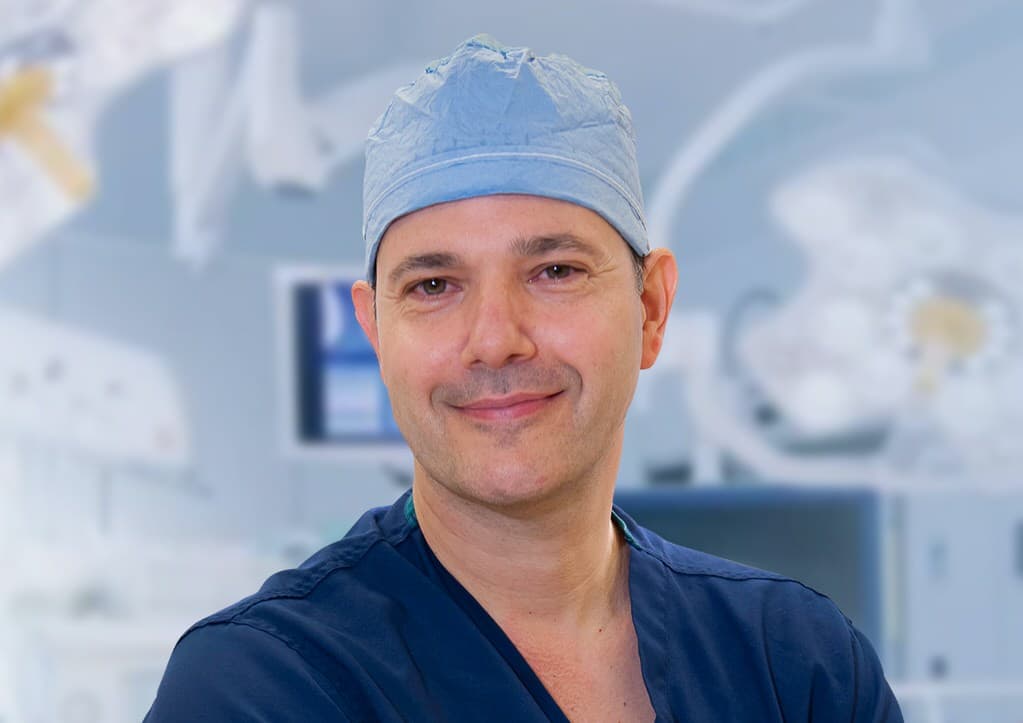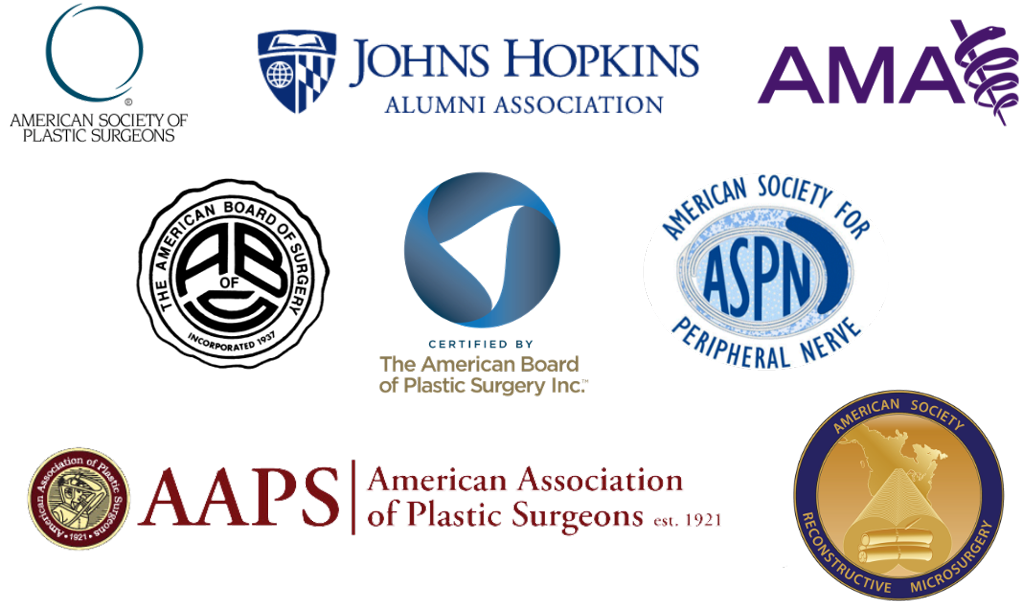Shai M. Rozen, M.D., F.A.C.S.
1801 Inwood Road
Dallas, TX 75390
Phone: (214) 645-2353
Monday–Friday: 8 a.m.–5 p.m.
Neck Lift
Aging of the neck is a concern for many people, making neck lift surgery an integral part of facial rejuvenation. At the University of Texas Southwestern Medical Center, Dr. Shai Rozen is a board-certified plastic surgeon and leading facial paralysis surgeon who performs neck lift surgery in Dallas. This procedure helps patients with and without facial paralysis to significantly improve facial appearance, symmetry, and esthetics. While optimal results are typically achieved when combined with a facelift, in some cases, a neck lift can be performed on its own.
View Before & After Photos
What does a neck lift have to do with facial paralysis?
In the setting of facial paralysis, the most superficial muscle of the neck, called the platysma, is often paralyzed and therefore doesn’t pose a significant issue, especially in older patients. But in facial paralysis patients who subsequently develop synkinesis (post-paralysis synkinesis), the platysma may get quite tight and create the vertical neck bands often seen as we age. BOTOX® injections in the neck can help patients who have light synkinesis, but surgical myectomy (cutting of the muscle) is typically needed for long-term functional and esthetic results.
What is a neck lift?
A neck lift is a procedure that is intended to improve definition of the neck and jawline by accomplishing the following:
- Improving the cervico-mental angle (the angle between the neck and area under the chin)
- Enhancing definition of the jawline (in conjunction with a facelift)
- Decreasing vertical banding caused in part by the underlying platysma muscle
Dr. Rozen uses several techniques to achieve these goals, including:
- Tightening the platysma muscle
- Cutting portions of the platysma muscle
- Reducing the fat under the platysma muscle
- Adding fat in specific areas when needed
- Removing skin on the neck judiciously
Can a neck lift be performed without a facelift?
A neck lift can be performed without a facelift, but expectations should be set as to the expected results. In most patients, combining a neck lift with a facelift will optimize the results since certain aspects of a SMAS-based lift will help with the definition of the jawline. In some individuals, especially men who have significant excess skin in the neck, direct removal of skin is an option, but the patient will need to have a thorough discussion with Dr. Rozen as to the placement of the scars.
What incisions are used in a neck lift?
Some of the incisions used in a facelift are used in a neck lift as well. These incisions are placed in front of the ear, extended to behind the ear, and along the neck hairline. Often, Dr. Rozen makes an additional well-concealed incision behind the mental crease (the skin crease behind the chin) to access the middle neck, platysma muscle, and in some individuals, other structures such as the digastric muscle or submandibular gland that may need to be addressed.
Is there a difference in a neck lift performed in the setting of facial paralysis compared to a regular neck lift?
Technically, there are some similarities and some differences. The incisions are similar and some of the skin removal patterns are similar. Conversely, there can be some differences in the deeper layers of the neck, especially with the platysma muscle, depending on the presentation of the paralysis.
If a patient has flaccid paralysis, increased tightening of the atrophied platysma on the paralyzed side is sometimes necessary, often combined with removal of portions of the platysma on the healthy side. If the patient has synkinesis, the platysma bands are often accentuated and need to be released more aggressively. This is done routinely in moderate to severe synkinesis in our patients.
Dr. Shai Rozen
Dr. Rozen is a board-certified plastic surgeon who co-created a facial paralysis specialty group with colleagues from otolaryngology & neurosurgery at the University of Texas Southwestern Medical Center.
Meet Dr. Rozen
If I have synkinesis and my neck muscles are released, do I need to continue with BOTOX® injections in the neck?
Most patients with moderate to severe synkinesis can discontinue BOTOX injections to the neck region after having their platysma muscle released. Often BOTOX is used in the neck before proceeding to surgery so patients can evaluate the future effect of muscle release. Dr. Rozen prefers patients discontinue BOTOX injections 8 to 12 weeks before surgical release of the neck.
What should I expect after a neck lift?
Similar to a facelift, some swelling and bruising should be expected and will mostly subside in the 2 to 3 weeks following surgery. Usually, 1 or 2 drains are used and removed within days after surgery. Sometimes, a small compression garment supporting the neck is used after surgery for a few weeks.
How long should the results from a neck lift last?
In general, similar to a facelift, the results should last for 10 years and sometimes more. Still, there are patients who will need touchups before that period, especially patients with short necks who have very loose skin with significant skin redundancy.
What complications can occur with a neck lift?
A neck lift is a safe procedure if performed correctly by a surgeon familiar with the facial nerve anatomy and neck anatomy, and knowledgeable about aesthetic techniques. Complications that can occur are injury to the marginal mandibular branch of the facial nerve resulting in weakness of the lower lip depression, injury to the great auricular nerve resulting in numbness in certain areas of the ear, hematoma (bleeding), seromas (fluid collection), and wound complications.
Can the risk of these complications be decreased?
As previously mentioned, in-depth knowledge of facial nerve anatomy, neck anatomy, and good surgical technique will reduce complications. Control of blood pressure before, during, and after surgery can decrease hematoma (bleeding) rates, and avoidance of smoking and controlling sugars in patients with diabetes will further decrease wound healing complications.
Next Steps
To learn more about neck lift surgery for patients with or without facial palsy, request a consultation to meet with Dr. Rozen at UT Southwestern.


